Whey or casein, soy, egg, multicomponent, beef protein powders? Complete review!
Confused by protein powders? Choose the protein that suits your goals and is right for you! Read the article - a guide to choosing the right protein supplement for you!

2023-07-15 Author: DarkSideLaboratories Reading time: 10 min min
- Introduction
- Whey Protein
- Casein
- Soy protein
- Egg protein
- Multi-component protein
- Beef protein
- Comparative table of the nutritional value of the considered proteins
- Choosing the Right Protein Supplement
- Conclusion
INTRODUCTION
Protein powders are a convenient way to increase your daily protein intake. They are popular among athletes, bodybuilders, fitness enthusiasts, supporters of a healthy lifestyle and proper nutrition. However, choosing the right protein powder is often a challenge even for experienced users, as there are many types of protein supplements available on the market. In this article, we compare whey, casein, soy, egg, multi-nutrient, and beef protein to help you make an informed decision about which type of protein supplement is right for your individual needs based on goals, dietary restrictions, and personal preferences.
WHEY PROTEIN
WHAT IS WHEY PROTEIN
Whey protein is the most popular and widely used protein supplement. It is a complete protein containing all 9 essential amino acids that the human body cannot produce on its own. It contains a large amount of BCAA and cysteine. Produced from milk.
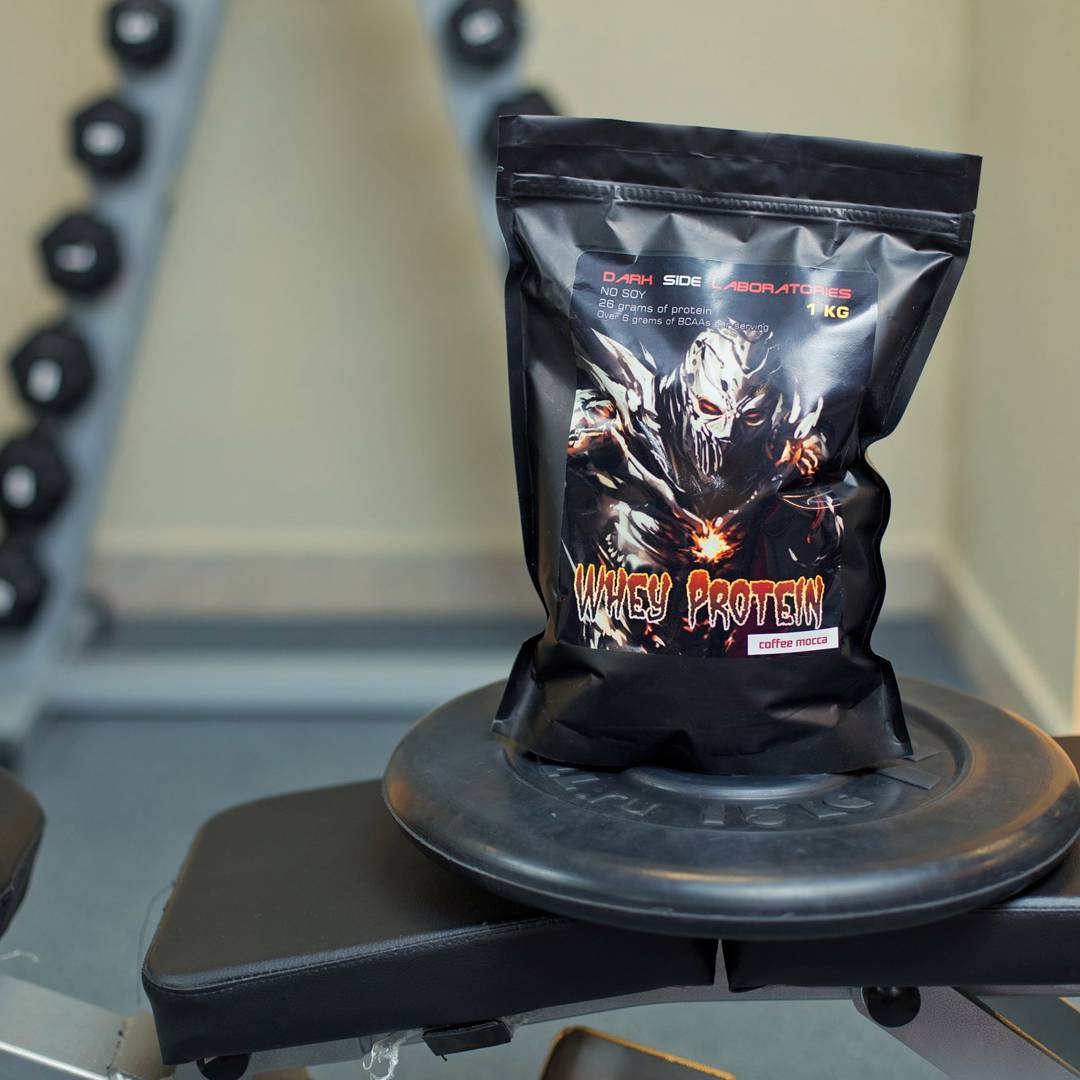
TYPES OF WHEY PROTEIN
There are three types of whey protein:
- Whey protein concentrate
Whey protein concentrate is the most common, affordable, and inexpensive type of whey protein. Contains 70% to 80% protein, 4%-5% fat and 2%-3% lactose. It has the most balanced nutritional profile.
- Whey protein isolate
Whey protein isolate is a more purified form of whey protein. As part of the minimum content of lactose (0.2 - 0.5%) and fat (1-2%). Protein - up to 90% - 95%. Great for people with lactose intolerance.
- Whey protein hydrolyzate
Whey protein hydrolyzate is a whey protein concentrate that has been broken down into peptides (chains of several amino acids) using the chemical process "hydrolysis". In fact, it is already partially digested protein. This form of protein is easier and faster to digest, but it also comes with the highest price. Contains 70-85% protein, 2-4% fat, lactose 1-3%
Whey Protein Benefits
Regardless of which type of whey you use, whey protein has the following benefits:
- promotes muscle growth and recovery after exercise
- quickly absorbed
- contains a large amount of BCAA (essential branched chain amino acids)
- improves immunity. This is due to the high content of lactoferrin and globulins. The leader in the content of these proteins is whey concentrate.
- helps in weight loss. Taken between main meals, reduces appetite and increases satiety
- lowers blood pressure in people with hypertension.
Whey Protein Disadvantages
Causes digestive problems in some people: bloating and gas
- depending on the form of whey protein, contains lactose in one quantity or another
- may cause allergic reactions
- not suitable for people with lactose and dairy intolerance
Comparative table of nutritional values and amino profiles of three types of whey protein
| Whey Protein Concentrate 80% (35 gr) | Whey Protein Isolate 92% (35 gr) | Whey Protein Hydrolysate 75% (35 gr) | |
| Protein (gr) | 28 | 32,2 | 26,2 |
| Fat (gr) | 1,75 | 0,175 | 1,64 |
| Carbohydrates (gr) | 1,4 | 1,05 | 1,31 |
| Calories | 147 | 133 | 137,81 |
| Amino Acid Profile | |||
| L-Alanine | 1,365 | 1,61 | 1,279 |
| L-Arginine | 0,7 | 0,676 | 0,656 |
| Aspartic Acid | 2,87 | 3,477 | 2,69 |
| L-Cystein | 0,595 | 0,740 | 0,557 |
| Glutamic Acid | 4,69 | 5,602 | 4,396 |
| L-Glycine | 0,49 | 0,483 | 0,459 |
| L-Histidine | 0,448 | 0,515 | 0,525 |
| L-Isoleucine | 1,61 | 1,932 | 1,509 |
| L-Leucine | 2,94 | 3,477 | 2,756 |
| L-Lysine | 2,695 | 2,930 | 2,526 |
| L-Methionine | 0,63 | 0,708 | 0,59 |
| L-Phenylalanine | 0,875 | 0,966 | 0,82 |
| L-Proline | 1,505 | 1,803 | 1.41 |
| L-Serine | 1,008 | 1,481 | 1,181 |
| L-Threonine | 1,96 | 2,221 | 1,837 |
| L-Tryptophan | 0,49 | 0,483 | 0,459 |
| L-Tyrosine | 0,84 | 0,837 | 0,787 |
| L-Valine | 1,575 | 2,189 | 1,476 |
Optimal time to take whey protein
Whey protein is best taken in the first 15 minutes after a workout, in the morning, right after waking up and between main meals.
Casein
What is casein
Casein is a type of protein derived from milk. Once in the stomach, casein acquires a gel-like structure. It is slowly absorbed, over 5-7 hours, providing a stable supply of amino acids to the body. The digestion rate of casein is 38% lower than that of whey protein.

Types of casein
There are four main types of casein. The main difference between them lies in the production methods. Non-critical differences in solubility, absorption rate and taste can also be noted.
- Micellar casein
Micellar casein is produced using micro-ultrafiltration technology. This technology allows you to preserve the natural structure of the protein. The most poorly soluble form of casein. Forms lumps when mixed with liquids. It has a slightly creamy or neutral taste.
- Rennet casein
Has the same benefits as micellar casein. It dissolves better. It has a mild neutral taste.
- Caseinate Ca
Calcium caseinate is obtained by treating milk with acids at high temperatures. The result is a partially denatured protein. In this regard, compared with micellar and rennet caseins, it has a higher absorption rate. It dissolves better, but has a slightly chalky taste and a grainy texture.
- Caseinate Na
It is also a partially denatured protein that has a slightly salty taste, which may not appeal to some people. The main difference between Ca and Na caseinate lies in the acids used in the production. For the production of the first, hydrochloric acid (HCL) is used, for the production of the second, alkali is used - sodium hydroxide (NaOH).
Note: in the production of sports nutrition products, micellar casein is most often used, Ca and Na caseinates are less common.
Benefits of casein protein
- prolonged release of amino acids
- highly effective in preventing muscle catabolism during sleep and prolonged fasting.
- slow digestion
- provides a feeling of satiety for a long time, which helps to control appetite
- rich in essential amino acids
- low lactose content
Disadvantages of casein protein
- not suitable for post workout
- contains less BCAA than whey protein
- poorly soluble, may form lumps when mixed with liquids
- may cause digestive problems: bloating and gas
- has a peculiar taste and texture that some people may not like
The optimal time of admission
Casein is best taken at night or during periods when you do not have the opportunity to fully eat for a long time.
Soy protein
What is soy protein
Soy protein is a plant-based protein derived from soybeans. It is a complete protein containing all 9 essential amino acids.
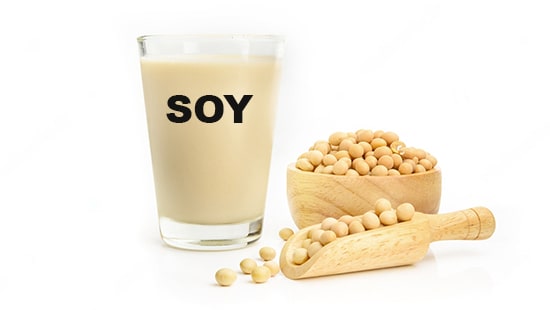
Types of soy protein
There are 3 forms of soy protein. Their main difference is in the percentage of protein and the degree of purification from fats and carbohydrates.
- Soy protein isolate
The most highly purified form. During the production process, carbohydrates and fats are almost completely removed. The percentage of protein is 90-95%, carbohydrates 1-2%, fats - 1-2%.
- Soy Protein Concentrate
Less refined form. Contains more fat, carbohydrates and fiber. The protein content is 70-80%, carbohydrates 10-18%, fats 4-6%.
- Soy flour
It has the lowest percentage of protein in the composition, but at the same time retains fiber, vitamins, minerals and fats, providing a more complete nutritional profile. Protein content 40-50%, carbohydrates 30-35%, fats 15-20%.
Note: Soy protein isolate is the most commonly used for sports nutrition products.
Soy Protein Benefits
- suitable for vegetarians and vegans
- lowers bad cholesterol (LDL) levels
- has a positive effect on the cardiovascular system
- increases bone density in older women. The most suitable for this purpose is soy flour, as it contains the highest amount of isoflavones (phytoestrogens).
- low price
Soy protein disadvantages
- contains phytoestrogens (isoflavones). Plant compounds similar in structure to the female sex hormone estrogen.
- contains 2 times less BCAA than whey protein
- In some people, soy protein can cause allergies and digestive problems.
- most of the soybeans from which soy protein is produced are genetically modified. Some people prefer to avoid GMO foods.
- contains phytates (phytic acid and its salts). These compounds interfere with the absorption of minerals: iron, zinc, magnesium.
- contains trypsin inhibitors. These substances block the action of the digestive enzyme trypsin, an enzyme necessary for the digestion of proteins. For this reason, soy protein is poorly digested.
- contains goitrogens, which interfere with the absorption of iodine and can lead to problems with the thyroid gland. Especially in people with a low iodine diet.
Comparative table of nutritional values and amino profiles of three types of soy protein
| Soy Protein Isolate 90% (35 gr) | Soy Protein Concentrate 70% (35 gr) | Soy Flavor 50% (35 gr) | |
| Protein (gr) | 31,5 | 24,5 | 17,5 |
| Fat (gr) | 0,175 | 0,175 | 0,175 |
| Carbohydrates (gr) | 0,175 | 6,3 | 9,45 |
| Calories | 115,5 | 124,6 | 110,95 |
| Amino Acid Profile | |||
| L-Alanine | 1,47 | 1,143 | 0,816 |
| L-Arginine | 2,625 | 2,041 | 1,458 |
| Aspartic Acid | 3,955 | 3,076 | 2,197 |
| L-Cystein | 0,42 | 0,326 | 0,233 |
| Glutamic Acid | 6,51 | 5,063 | 3,616 |
| L-Glycine | 1,435 | 1,116 | 0,797 |
| L-Histidine | 0,945 | 0,735 | 0,525 |
| L-Isoleucine | 1,645 | 1,279 | 0,913 |
| L-Leucine | 2,835 | 2,205 | 1,575 |
| L-Lysine | 2,31 | 1,796 | 1,283 |
| L-Methionine | 0,42 | 0,326 | 0,233 |
| L-Phenylalanine | 1,785 | 1,388 | 0,991 |
| L-Proline | 1,54 | 1,197 | 0,855 |
| L-Serine | 1,505 | 1,170 | 0,836 |
| L-Threonine | 1,26 | 0,98 | 0,7 |
| L-Tryptophan | 0,42 | 0,326 | 0,233 |
| L-Tyrosine | 1,26 | 0,98 | 0,7 |
| L-Valine | 1,75 | 1,361 | 0,972 |
The optimal time for taking soy protein
Soy protein is best taken within the first 15 minutes after a workout and/or between main meals.
Egg protein
What is egg protein
Egg protein is a complete animal protein derived from egg whites. Contains all 9 essential amino acids (EAA`s).
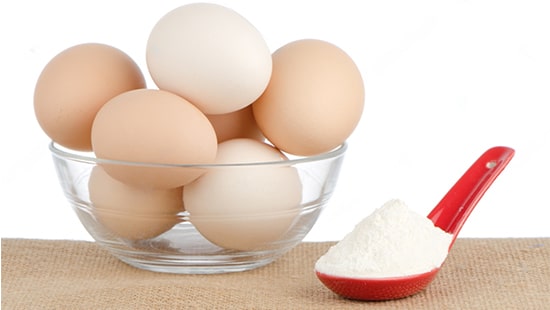
Egg Protein Benefits
- quickly absorbed
- high biological value
- does not contain lactose
- suitable for people with allergies to dairy products
- rich content of BCAA
- raises good cholesterol (HDL) levels
- Increases satiety and reduces appetite
- lowers blood pressure in people with hypertension
Egg Protein Disadvantages
- lower content of L-Leucine than whey protein
- limited number of flavors
- may cause allergies in some people
- the disgusting smell of the shaker, in case you forget to wash it after drinking a cocktail (the shaker can be thrown away immediately).
Nutritional value and amino acid profile table off egg protein
| Egg Protein 80% | 35 gr |
| Protein (gr) | 28 |
| Fat (gr) | 0 |
| Carbohydrates (gr) | 0,245 |
| Calories | 129,5 |
| Amino Acid Profile | |
| L-Alanine | 0,98 |
| L-Arginine | 0,98 |
| Aspartic Acid | 2,765 |
| L-Cystein | 0,595 |
| Glutamic Acid | 4,41 |
| L-Glycine | 1,225 |
| L-Histidine | 0,735 |
| L-Isoleucine | 1,505 |
| L-Leucine | 2,345 |
| L-Lysine | 2,03 |
| L-Methionine | 0,84 |
| L-Phenylalanine | 1,365 |
| L-Proline | 1,61 |
| L-Serine | 1,89 |
| L-Threonine | 1,155 |
| L-Tryptophan | 0,42 |
| L-Tyrosine | 1,085 |
| L-Valine | 2,065 |
The optimal time of admission
Egg protein is best taken 1 hour before training, in the first 15 minutes after training, in the morning, right after waking up and / or between main meals.
Multicomponent protein
What is a multicomponent protein
Multi-component protein supplements are a mixture of several types of protein. As a rule, whey, casein, soy and egg proteins. There are products that contain several types of whey protein (isolate + concentrate) + several types of casein (micellar casein + Ca caseinate) + soy isolate + egg protein. The total number of different types of protein in the composition of multicomponent proteins can reach 6-7. The proportions of proteins contained in such additives, each manufacturer determines independently.
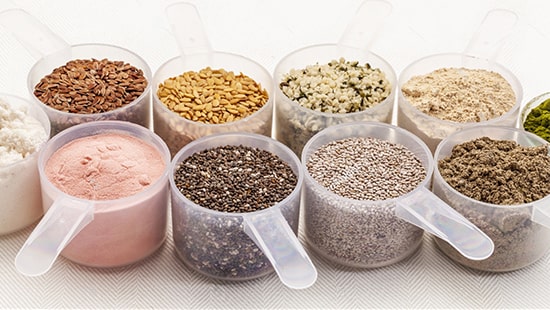
Advantages of multicomponent proteins
- different proteins in the composition have different absorption rates. The combination of proteins of multi-component protein supplements allows you to quickly start supplying the body with the necessary amino acids and continue providing it for a long time.
- improved amino acid profile. The combination of proteins provides a more complete amino acid profile.
- versatility. Can be used at different times during the day.
Disadvantages of multicomponent proteins
- The quality varies depending on the protein ingredients used and their ratio. Trying to reduce the cost of the final product, manufacturers often use the cheapest protein ingredients in the composition. They can make up 45-60% of the total weight of the product. The proportion of more expensive protein components (whey isolate / hydrolyzate) may not exceed 5-10%.
Note: always carefully study the composition! The ingredients in the composition are arranged in descending order of their mass fraction! Most of all, the product contains the ingredient that is listed in the first place, a little less - which is listed in the second, etc.
- For homogeneous mixing of different types of protein and giving a pleasant texture, taste and smell to the final product, manufacturers have to add a significant amount of auxiliary ingredients to the composition: additives of the “E” group. This is negatively evaluated by people who seek to minimize the consumption of E-supplements in the diet.
The optimal time of admission
Multi-component protein can be used before training, immediately after training, during the day and at night.
Beef protein
What is beef protein
Beef protein is a complete, animal-based protein derived from beef. Contains all 9 essential amino acids (EAAs)
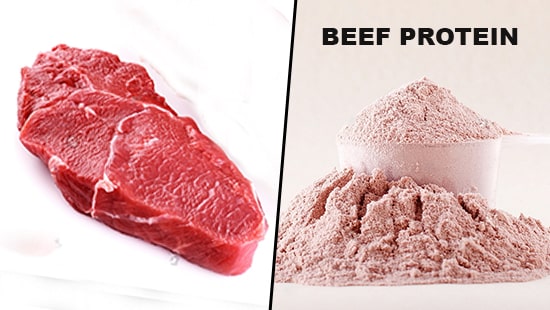
Types of beef protein
There are 2 forms of beef protein. Their main difference is in the speed of assimilation.
- Beef protein isolate
The method of obtaining is filtering. This method preserves the natural protein structure and amino acid profile. Most of the fat is removed during production. The protein content is over 90%.
- Beef protein hydrolyzate
Beef protein hydrolyzate is beef protein isolate that has undergone enzymatic hydrolysis (breakdown into chains of several amino acids). In fact, it is already partially digested protein, which is faster and easier to digest.
Benefits of Beef Protein
- high content of essential amino acids BCAA, especially l-leucine, however, according to this indicator, it loses to whey protein
- suitable for those who are lactose and soy intolerant
- rich in iron, zinc, vitamin B12 and creatine
- low fat content
- slow digestion of beef protein isolate, however, according to this indicator, it loses to casein.
- fast digestion of beef protein hydrolyzate, faster than whey concentrate
Disadvantages of beef protein
- allergenicity. Not suitable for people allergic to red meat.
- high price
- taste, texture and smell. In its pure form, it has a specific taste, smell and texture. To mask the taste, smell and give a pleasant texture, manufacturers have to add a significant amount of auxiliary ingredients to the composition: additives of the “E” group. This is negatively evaluated by people who seek to minimize the consumption of E-supplements in the diet.
The optimal time of admission
- Hydrolyzed beef protein - in the first 15 minutes after training, in the morning, immediately after waking up
- Beef protein isolate - any time of the day, at night, can be used as a meal replacement
Comparative table of nutritional of proteins in consideration
| Whey Protein Concentrate 80% (35 gr) | Micellar Casein 85% (35 gr) | Soy Protein Isolate 90% (35 gr) | Egg Protein 80% (35 gr) | Beef Protein Isolate 95% (35 gr) | Multiingredient Protein (35 gr) | |
| Protein (gr) | 28 | 29,75 | 31,5 | 28 | 33,25 | varies |
| Fat (gr) | 1,75 | 0,525 | 0,175 | 0 | 0,35 | varies |
| Carbohydrates (gr) | 1,4 | 1,05 | 0,175 | 0,245 | 0,07 | varies |
| Calories | 147 | 133 | 115,5 | 129,5 | 136,5 | varies |
Note: The table shows data for pure raw materials without auxiliary ingredients.
Choosing the Right Protein Supplement for You
It is difficult to say which type of protein is considered unequivocally the best. Each of them has its own unique advantages and disadvantages.
Whey protein is the most popular and commonly used. It is well researched, affordable, pleasant to use and has a wide range of flavors to satisfy the most demanding user. It has a high biological value, is easily digested and absorbed by the body. Contains an excellent amino acid profile and a large amount of BCAA in the composition. Whey protein will be an excellent choice for most people.

However, some people may prefer other types of protein. For example: vegans or vegetarians will prefer soy protein, while people with allergies to dairy products and lactose will choose egg or beef protein powder. Perhaps some people need a slow-digesting protein, and then their decision will be in favor of casein.
Ultimately, the choice of the best protein powder is up to each individual based on dietary restrictions, preferences, and goals.
Conclusion
Protein powders are a safe, convenient and easy way to increase your protein intake in your diet. A wide variety on the market will allow everyone to choose the right product for him. Now that you know the key advantages and disadvantages of each type of protein supplement, you can consciously choose the product you need.
FAQ
- Are protein supplements safe? Yes, protein supplements are safe.
- Can I take more than one type of protein supplement? Yes, you can. This solution will accelerate the achievement of your fitness goals.
- What is the difference between whey and casein protein? Whey protein is quickly absorbed by the body, making it ideal for post-workout recovery, while casein protein is slowly digested and ideal for before bed.
- Is soy protein suitable for men? Yes, it does. Men can consume soy protein, but some men have concerns about its phytoestrogen content.
- Can you eat egg protein if you are allergic to eggs? No.
- Is it possible to build muscle with a multicomponent protein? Yes, definitely.
_____________________________________________
Reference:
1. Whey protein supplementation and its potentially adverse effects on health: a systematic review
Quezia Damaris Jones Severino Vasconcelos, Tatiana Paschoalette Rodrigues Bachur, Gislei Frota Aragão
Davies RW, Carson BP, Jakeman PM.
A Castro LH, S de Araújo FH, M Olimpio MY, B de B Primo R, T Pereira T, F Lopes LA, B S de M Trindade E, Fernandes R, A Oesterreich S.
Christopher M Lockwood, Michael D Roberts, Vincent J Dalbo, Abbie E Smith-Ryan, Kristina L Kendall, Jordan R Moon, Jeffrey R Stout
5. Pre-Sleep Casein Supplementation, Metabolism, and Appetite: A Systematic Review
Justin Dela Cruz, David Kahan
K Nielsen, J Kondrup, P Elsner, A Juul, E S Jensen
7. Casein: a milk protein with diverse biologic consequences
M J Miller 1, S A Witherly, D A Clark
8. Soy: a complete source of protein
Aaron J Michelfelder
9. Cholesterol lowering mechanism of soybean protein hydrolysate
Seong-Jun Cho, Marcel A Juillerat, Cherl-Ho Lee
Pedro L Valenzuela, Zigor Montalvo, Fernando Mata, Manuela González, Eneko Larumbe-Zabala, Fernando Naclerio
11. Effects of Supplementation with Beef or Whey Protein Versus Carbohydrate in Master Triathletes
Fernando Naclerio, Marco Seijo, Eneko Larumbe-Zabala, Nadia Ashrafi, Tatiana Christides, Bettina Karsten, Birthe V Nielsen
Featured Supplements
#WheyProtein #SoyProtein #Casein #EggProtein #BeefProtein #MulticomponentProtein #CompareProteinPowders #СывороточныйПротеин #СоевыйПротеин #Казеин #ЯичныйПротеин #МногокомпонентныйПротеин #ГолвяжийПротеин #СравнениеПротеиновыхПорошков


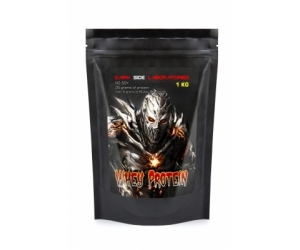
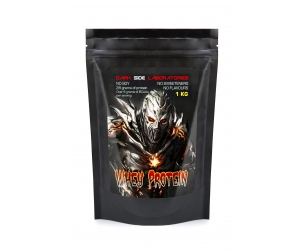


 Russia, 456440,
Russia, 456440,







